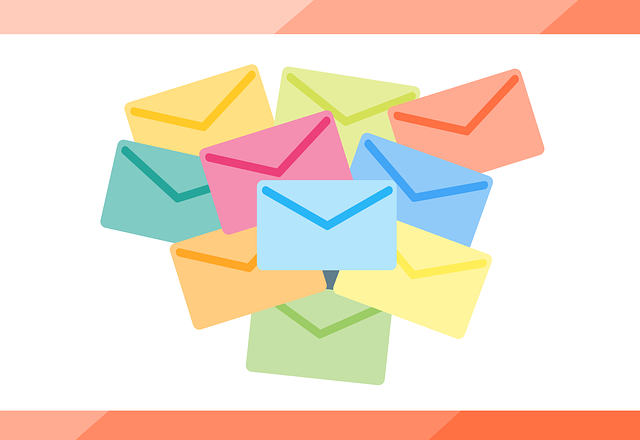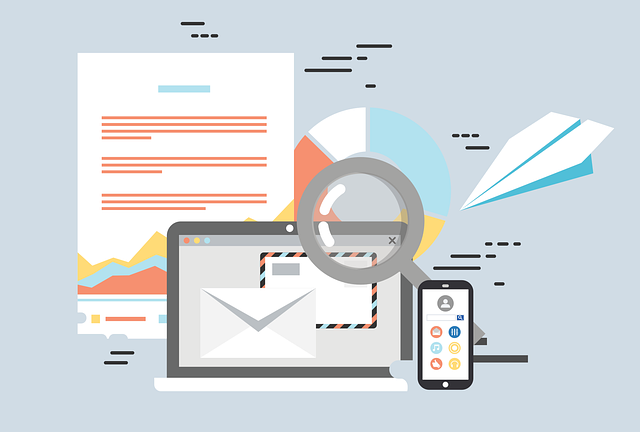Table of Contents
Are your cold emails being ignored? Do you struggle to get your recipients to even open your messages? It’s time to revolutionize your email marketing strategy with the power of effective subject lines.
But what makes a subject line stand out? How can you craft attention-grabbing subject lines that compel your recipients to click? In this comprehensive guide, we will unveil the top 7 best subject lines for cold emails that will improve your open rates and take your outreach to new heights.
Get ready to discover expert tips and examples that will revolutionize your email marketing game. Say goodbye to email oblivion and hello to a highly engaging and successful cold email campaign!

Understanding the Importance of best subject lines for cold emails
In the world of cold outreach, the subject line of your email plays a critical role in capturing the attention of your recipients and compelling them to open your message. A well-crafted subject line can make the difference between your email being opened or ignored, which directly impacts the success of your outreach efforts. In this section, we will delve into the importance of subject lines in cold emails and how they can significantly improve your open rates.
The subject line serves as the first impression of your email, giving recipients a glimpse into what they can expect inside. It should grab their attention, pique their curiosity, and entice them to click and explore further. The best subject lines for cold emails can cut through the clutter of a crowded inbox and make your email stand out from the rest.
So, how the best subject lines for cold emails can improve your open rates? By crafting the best subject lines for cold emails, you can increase the likelihood of your emails being opened and read. A captivating subject line creates intrigue and curiosity, making recipients eager to know more. It provides a glimpse of the value or benefits they can gain by opening your email, sparking their interest and motivating them to click.
Let’s take a look at some examples of catchy subject lines that have proven to be effective:
| Subject Line | Open Rate Improvement |
|---|---|
| Don’t miss out on this limited-time offer! | 27% |
| Unlock the secrets to skyrocketing your sales | 35% |
| Exclusive invitation: Join our elite community | 39% |
| Discover the key to doubling your productivity | 42% |
The best subject lines for cold emails employ various techniques, such as creating a sense of urgency, offering valuable insights, and providing exclusivity, to capture the recipient’s attention and drive open rates. By incorporating similar techniques into your subject lines, you can increase the chances of your cold emails being opened and read.
Now that we’ve explored the importance of the best subject lines for cold emails and witnessed some effective examples, let’s move on to the next section, where we will delve into strategies for researching your target audience to create the best subject lines for cold emails.
Researching Your Target Audience for Personalized Subject Lines
Creating compelling subject lines is a crucial element of any successful email marketing campaign. To improve open rates and maximize the effectiveness of your email outreach, it’s essential to understand your target audience. By conducting thorough research and crafting personalized subject lines, you can increase the chances of your emails being opened and engaged with.
When researching your target audience, start by gathering demographic information such as age, gender, location, and occupation. Additionally, analyze their interests, pain points, and preferences to gain deeper insights into their motivations and needs. This understanding will enable you to tailor your subject lines to resonate with your specific audience.
Identify Common Pain Points
By identifying the common pain points of your target audience, you can address their challenges directly in your subject lines. Use empathetic language that resonates with their needs and offers a solution or benefit. Consider using phrases like “Overcome [pain point] with our [product/service]” or “Discover the key to [desired outcome]” to pique their interest and encourage them to open your emails.
Segmentation for Personalization
Segmentation is a powerful technique that allows you to categorize your audience based on specific criteria, such as purchasing behavior or engagement level. By segmenting your audience, you can create personalized subject lines that speak directly to each group’s interests or past interactions with your brand. For example, you can use subject lines like “Exclusive offer for our loyal customers” or “We miss you! Come back for a special reward” to make recipients feel valued and increase their curiosity.
Address Your Audience’s Goals
Understanding your target audience’s goals and aspirations will help you create subject lines that align with their desires. Highlight the benefits or solutions your email offers and use phrases like “Achieve your [goal] with our [product/service]” or “Unlock the secrets to [desired outcome]” to capture their attention. By showing how your email can help them achieve their goals, you increase the likelihood of them opening and engaging with your message.
| Research Step | Example Tactics |
|---|---|
| Conduct Surveys | Use online survey tools to collect data about your target audience’s preferences and pain points. |
| Review Analytics | Analyze website and email analytics to gain insights into your audience’s behavior and interests. |
| Social Media Listening | Monitor conversations on social media platforms to understand the topics and concerns of your target audience. |
| Customer Interviews | Interview your existing customers to gather firsthand insights about what motivates them and why they engage with your brand. |
By combining these research tactics, you can create the best subject lines for cold emails that speak directly to the needs and interests of your target audience. Remember to continually analyze and optimize your subject lines based on the feedback and reactions you receive. This iterative process will help you refine your approach and improve open rates over time.

Craft Clear and Concise Subject Lines
When it comes to cold emails, clear and concise subject lines are crucial. In order to capture the attention of your recipients and improve open rates, it’s important to keep your subject lines straightforward and to the point. Effective email subject lines should convey the main message of your email in a concise and compelling way.
Here are some subject line strategies to help you craft clear and concise subject lines:
- Be specific: Clearly state the purpose of your email in the subject line. Avoid vague or generic phrases that don’t provide any context.
- Keep it short: Long subject lines can get cut off or become difficult to read on mobile devices. Aim for a length of 50 characters or less to ensure maximum impact.
- Use action-oriented language: Make your subject lines more engaging by including action verbs that prompt the recipient to take action or open the email.
- Avoid spam triggers: Stay away from excessive capitalization, exclamation marks, and spam trigger words that could trigger spam filters and decrease deliverability.
Crafting clear and concise subject lines may require some experimentation and testing. Don’t be afraid to iterate and refine your subject lines to find what resonates best with your audience. By implementing these subject line strategies, you can improve open rates and increase the effectiveness of your cold email campaigns.
Creating a Sense of Urgency in Subject Lines
In the world of email marketing, capturing your recipients’ attention and motivating them to open your emails is a constant challenge. One effective strategy to overcome this hurdle is by creating a sense of urgency in your subject lines. By leveraging urgency, you can improve open rates and drive immediate action from your audience.
Here are some subject line strategies that can help you create a compelling sense of urgency:
- Limited-time offers: Highlighting time-limited deals or promotions in your subject lines can create a sense of urgency. For example, “Last Chance: 48 Hours Left to Save 50%!”
- Countdowns and deadlines: Incorporating countdowns or explicit deadlines in your subject lines can encourage recipients to act quickly. For instance, “Only 24 Hours to Claim Your Exclusive Gift!”
- Event notifications: If you’re hosting an event or webinar, notify recipients about limited spots or early bird registration deadlines. For example, “Limited Spots Available! Register Now for our Exclusive Webinar!”
- Flash sales: Announce flash sales with subject lines that convey the urgency of limited-time discounts, such as “Hurry! 2 Hours Only: 70% Off All Products!”
By implementing these subject line strategies, you can tap into your recipients’ fear of missing out (FOMO) and compel them to open your emails immediately. However, it’s crucial to ensure that the urgency you create in your subject lines is genuine and aligned with the content of your emails.
Here are some urgency-inducing subject line examples:
| Subject Line | Description |
|---|---|
| “Limited Time: 24-Hour Flash Sale Ends Tonight!” | A subject line that combines a limited time offer with a clear deadline. |
| “Final Reminder: Don’t Miss Out on Our Exclusive Early Bird Discount!” | A subject line that creates urgency by reminding recipients of an expiring early bird discount. |
| “Seats Running Out Fast! Register Now for the Best Conference of the Year!” | A subject line that highlights limited seating availability for a highly anticipated event. |
| “Urgent: Limited Stock! Grab Your Favorite Products Before They’re Gone!” | A subject line that emphasizes limited stock availability to drive immediate action. |
Remember, creating a sense of urgency in your subject lines requires careful consideration and strategic implementation. Be sure to test different approaches and monitor the impact of your subject lines on open rates to optimize your email marketing efforts.
Leveraging Personalization in Subject Lines
When it comes to cold emails, personalization can be a game-changer. By tailoring your subject lines to each individual recipient, you can significantly increase the chances of your emails being opened. In this section, we will explore the importance of personalization in subject lines and provide examples of how to incorporate personalization techniques effectively.
The Power of Personalization
Personalized subject lines make your recipients feel acknowledged and valued, increasing the likelihood of engagement. By addressing them by name or referencing relevant information, you create a sense of connection that captures their attention.
For example:
“John, don’t miss out on this exclusive offer just for you!”
Segmentation and Customization
Segmenting your email list allows you to target specific groups with tailored subject lines. By understanding the unique needs and interests of each segment, you can create the best subject lines for cold emails that resonate with their preferences, increasing open rates.
For example, if you’re reaching out to a group of marketing professionals, you can personalize the subject line by referencing their industry:
“Attention Marketing Pros: Boost Your ROI with Our New Tool”
Using Dynamic Content
Dynamic content enables you to automatically insert personalized information into your subject lines, such as the recipient’s company name or recent activity. This level of customization adds a personal touch and boosts engagement.
For example:
“Congratulations on your recent webinar success, [Recipient]!”
Personalization Techniques and Examples
| Technique | Example |
|---|---|
| Addressing recipient by name | “Hey [Name], check out this exciting opportunity!” |
| Referencing recipient’s company | “Attention [Company] team: Discover our latest innovation!” |
| Mentioning recent activity | “Thank you for attending our webinar, [Recipient]!” |
| Personalized offer | “[Name], enjoy 20% off your next purchase!” |
By incorporating these personalization techniques and examples into the best subject lines for cold emails, you can create a sense of relevance and connection, significantly improving your open rates.

Incorporating Curiosity and Intrigue in Subject Lines
When it comes to email marketing, crafting the best subject lines for cold emails that spark curiosity and intrigue is essential in grabbing the attention of your recipients and improving open rates. By leveraging the power of curiosity, you can create a compelling urge in your audience to discover what your email holds. In this section, we will explore various subject line strategies that incorporate curiosity and intrigue, along with some catchy email subject line examples that have proven to be successful.
1. Pose intriguing questions
One effective way to pique curiosity is by asking thought-provoking questions in your subject lines. By addressing a pain point or presenting a challenge, you can engage your audience and entice them to learn more. For example:
| Subject Line Examples |
|---|
| “Are you making these email marketing mistakes?” |
| “Want to know the secret to doubling your open rates?” |
| “Are you missing out on this game-changing opportunity?” |
2. Tease exclusive content
Offering exclusive content or valuable insights in your emails can create a sense of exclusivity and make your recipients curious to uncover what they’re missing out on. Consider using the best subject lines for cold emails that tease the exclusive nature of your content, such as:
| Subject Line Examples |
|---|
| “Unlock the secrets of successful email marketing” |
| “Be part of an exclusive community of industry experts” |
| “Get access to insider tips for boosting your open rates” |
3. Create a sense of mystery
Using the best subject lines for cold emails that create a sense of mystery can be highly effective in captivating your audience’s attention. By leaving some information undisclosed, you can entice your recipients to open your emails to uncover the missing pieces. Here are some examples:
| Subject Line Examples |
|---|
| “The secret to email marketing success revealed…” |
| “Discover the untapped potential of email automation” |
| “This email holds the key to your next breakthrough” |
Remember, incorporating curiosity and intrigue in your subject lines is just one piece of the puzzle to improve your open rates. It’s important to align your subject lines with the content of your emails and ensure that the promises made in the subject lines are fulfilled in the email body. By consistently delivering valuable and engaging content, you can build trust and maintain a high level of engagement with your audience. Continue to the next section where we will discuss the importance of A/B testing your subject lines for optimal performance.
A/B Testing Your Subject Lines for Optimal Performance
When it comes to crafting the best subject lines for cold emails, A/B testing is a vital tool that can help you optimize performance and improve open rates. By experimenting with different subject line strategies, you can identify the approaches that resonate most with your audience and maximize the impact of your email marketing efforts.
So, what exactly is A/B testing? It involves creating two or more variations of your subject lines and testing them against each other to determine which one performs better. This method allows you to gather data and insights on what appeals to your recipients, enabling you to refine the best subject lines for cold emails and boost your open rates.
Why Is A/B Testing Important?
A/B testing provides valuable insights into your target audience’s preferences and behaviors. By analyzing the performance of different subject line variations, you can gather data on open rates, click-through rates, and conversion rates which helps to craft the best subject lines for cold emails. This data-driven approach helps you make informed decisions about your subject lines and tailor them to your audience’s preferences.
By understanding what subject line strategies generate the highest engagement, you can improve your open rates and increase the effectiveness of your email campaigns. A/B testing allows you to continuously iterate and improve the best subject lines for cold emails based on real-time feedback, ensuring you stay ahead of the competition.
How to Conduct A/B Tests for Your Subject Lines
- Set clear goals: Before conducting A/B tests, define your objectives. Are you aiming to increase open rates, click-through rates, or conversions? Clarifying your goals will help you focus your testing and measure the impact accurately.
- Identify variables: Choose specific elements to test, such as subject line length, personalization, tone, urgency, or different keywords. By isolating one variable at a time, you can determine the individual impact of each element on your open rates.
- Create variations: Develop two or more versions of your subject lines, varying the identified elements. Ensure that each variation has a distinct and measurable difference.
- Split your audience: Divide your recipient list into equal segments and assign each segment a unique subject line variation. Be mindful of the sample size, aiming for statistical significance.
- Send and analyze: Send your emails and monitor their performance, paying attention to open rates, click-through rates, and conversions. Use email marketing software or analytics tools to track and compare the results of each test group.
- Iterate and optimize: Based on the test results, identify the subject line strategies that perform best and adapt your future campaigns accordingly. Continuously refine your subject lines to optimize their performance and maximize your open rates.
A/B testing is an ongoing process. Even after identifying effective subject line strategies, constantly evolving consumer preferences and trends may require further experimentation and adaptation. By regularly testing and refining your subject lines, you can continuously improve your email marketing efforts, achieve optimal performance and craft the best subject lines for cold emails.
| Benefits of A/B Testing Subject Lines | How to Optimize Open Rates Through A/B Testing |
|---|---|
| 1. Gain valuable insights into audience preferences | 1. Set clear goals for your testing |
| 2. Identify the most effective subject line strategies | 2. Choose specific variables to test |
| 3. Continuously refine and improve your subject lines | 3. Create distinct variations of your subject lines |
| 4. Increase open rates and engagement | 4. Split your audience into test groups |
| 5. Stay ahead of the competition | 5. Analyze and compare the performance of each group |
Analyzing and Optimizing best subject lines for cold emails
Once you have implemented the best subject lines for cold emails, it’s crucial to analyze their performance and make necessary optimizations. The effectiveness of your subject lines can have a direct impact on your email open rates and overall email marketing success. By continuously analyzing and refining your subject lines, you can improve your outreach efforts and achieve better results.
Evaluating the Effectiveness of Best Subject Lines for Cold Emails
- Open Rates: Monitor the percentage of recipients who open your emails based on the subject lines used. This metric helps gauge initial engagement and interest in your email content.
- Click-Through Rates: Track the number of recipients who click on links or CTAs within your emails. This metric provides insights into how well your subject lines motivate action.
- Conversion Rates: Measure the proportion of recipients who complete desired actions, such as making a purchase or signing up for a service. Conversion rates indicate the effectiveness of your subject lines in driving meaningful engagement.
- Email Revenue: Analyze the revenue generated directly from your email campaigns to understand the financial impact of your subject lines.
Tips for Optimization
Based on the data you collect, here are some tips for optimizing your subject lines:
- Test Different Variations: Experiment with different subject line variations to see which ones resonate best with your audience. Try different lengths, tones, and call-to-action phrases to find the optimal combination.
- Personalization: Tailor your subject lines to the individual recipient whenever possible. Use their name or mention specific details relevant to them. Personalization can boost open rates and engagement.
- Relevance and Clarity: Ensure your subject lines accurately convey the content and purpose of your email. Be clear, concise, and avoid misleading or clickbait-style subject lines.
- Create a Sense of Urgency: Incorporate time-sensitive language or limited-time offers to create a sense of urgency in your subject lines. This can prompt recipients to take immediate action.
- A/B Testing: Continuously test and compare different subject line variations using A/B testing. This allows you to identify which strategies are most effective for your audience and optimize accordingly.
By implementing these tips, you can refine and optimize the best subject lines for cold emails to improve open rates, engagement, and ultimately, the success of your email marketing campaigns. Remember to monitor and analyze the performance of your subject lines regularly and make data-driven adjustments to maximize your outreach impact.

Best Practices for the Best Subject Lines for Cold Emails
Creating the best subject lines for cold emails is a crucial aspect of successful cold email campaigns. Implementing the right subject line strategies can significantly improve your open rates and increase the effectiveness of your outreach efforts. In this section, we have compiled a list of best practices for crafting the best subject lines for cold emails that will grab the attention of your recipients and improve your chances of getting your emails opened and read.
- Personalization: Tailor your subject lines to resonate with your target audience. Incorporate personalization techniques such as using the recipient’s name or referencing their company to make the email feel more relevant and personalized.
- Clarity and Brevity: Keep your subject lines concise and to the point. Use clear and straightforward language to communicate the purpose of your email effectively. Avoid using vague or ambiguous words that may confuse your recipients.
- Relevance: Ensure that your subject lines align with the content of your email. Make sure that the recipient understands why the email is relevant to them and how it can benefit them.
- Create Curiosity: Spark the curiosity of your recipients by using the best subject lines for cold emails that evoke a sense of intrigue. Pose a thought-provoking question, tease valuable information, or create a sense of mystery to entice recipients to open your email.
- Add a Sense of Urgency: Create a sense of urgency in your subject lines to motivate recipients to take immediate action. Use phrases like “limited time offer,” “exclusive opportunity,” or “ending soon” to convey a sense of urgency and prompt recipients to open your email right away.
- Avoid Spam Triggers: Be mindful of spam filters and avoid triggering them with spammy words or phrases. Stay away from excessive exclamation marks, all caps, or misleading statements that may flag your email as spam.
- Test and Optimize: A/B test your subject lines to identify what resonates best with your audience. Experiment with different variations, such as different wording or personalization techniques, and analyze the results to optimize your subject lines for maximum open rates.
By following these best practices, you can create compelling, engaging and best subject lines for cold emails that stand out in crowded inboxes and improve the likelihood of your cold emails being opened. Craft the best subject lines for cold emails with care, keeping your audience in mind, and continuously analyze and optimize them for optimal outreach success.
Conclusion
Crafting the best subject lines for cold emails is a crucial aspect of successful email outreach. By implementing the strategies and examples provided in this guide, you can enhance your email open rates and improve the effectiveness of your cold email campaigns.
Remember to continuously analyze and optimize your best subject lines for cold emails based on the preferences of your target audience for optimal results in your outreach efforts.
By tailoring your best subject lines for cold emails to resonate with your specific audience, creating a sense of urgency, leveraging personalization, and incorporating curiosity and intrigue, you can capture the attention of your recipients and motivate them to open your emails. A/B testing and analyzing the performance of your subject lines are essential practices for optimizing their impact.
As you navigate the world of email marketing, follow the best practices outlined in this guide and stay adaptive to the changing preferences of your audience. By crafting the best subject lines for cold emails, you can make a significant impact on your email outreach and drive the success of your cold email campaigns.
FAQ
What are the best subject lines for cold emails?
The best subject lines for cold emails are those that are attention-grabbing, personalized, and create a sense of curiosity or urgency. Examples include “Quick question for [Recipient’s Company Name]” or “Don’t miss out on exclusive [Product/Service] offer!”
How do effective email subject lines improve open rates?
The best subject lines for cold emails capture the recipient’s attention and entice them to open the email, resulting in higher open rates. By incorporating personalization, curiosity, and relevance, you can increase the likelihood of your emails being opened and read.
What strategies can I use to improve my cold email subject lines?
To improve your cold email subject lines, you can conduct thorough research on your target audience to understand their preferences and tailor the subject lines accordingly. Additionally, you can leverage tactics such as creating a sense of urgency, personalization, and curiosity to make your subject lines more compelling.
How important is it to craft clear and concise subject lines?
Clear and concise subject lines are crucial in crafting the best subject lines for cold emails as they make it easy for recipients to understand the purpose or value of the email at a glance. By keeping your subject lines straightforward and to the point, you can grab the attention of your recipients and increase the chances of them opening your emails.
How can I create a sense of urgency in the best subject lines for cold emails?
Creating a sense of urgency in your subject lines can be done by using time-limited offers, limited availability, or highlighting the benefits of taking immediate action. For example, “Limited spots available – Secure your spot now!” or “Last chance to save 50%! Don’t wait!”
Why is personalization important in subject lines?
Personalized the best subject lines for cold emails make the recipient feel valued and increase the likelihood of your email being opened. By incorporating the recipient’s name, company, or other relevant information, you can create a connection and make your subject lines more relevant to their needs or interests.
How can I incorporate curiosity and intrigue into my subject lines?
To incorporate curiosity and intrigue, you can pose a thought-provoking question, tease exclusive content or offers, or use teaser statements that make the recipient curious to know more. Examples include “Guess what we discovered about [Industry Trend]?” or “You won’t believe what we have in store for you!”
Why is A/B testing subject lines important?
A/B testing subject lines allows you to compare the performance of different variations and identify what resonates best with your audience. By testing different subject lines, you can gather valuable insights and optimize your email campaigns for maximum effectiveness and craft the best subject lines for cold emails.
How can I analyze and optimize subject line performance?
To analyze and optimize subject line performance, you can track metrics such as open rates, click-through rates, and conversions. Based on the data, you can make adjustments and craft the best subject lines for cold emails, such as testing different strategies or incorporating feedback from your recipients, to continually improve their effectiveness.
What are some best practices for cold email subject lines?
Some best practices for cold email subject lines include personalizing the subject lines, keeping them concise and clear, using action-oriented language, avoiding spammy or misleading content, and segmenting your audience to tailor the best subject lines for cold emails to their specific needs or pain points.



